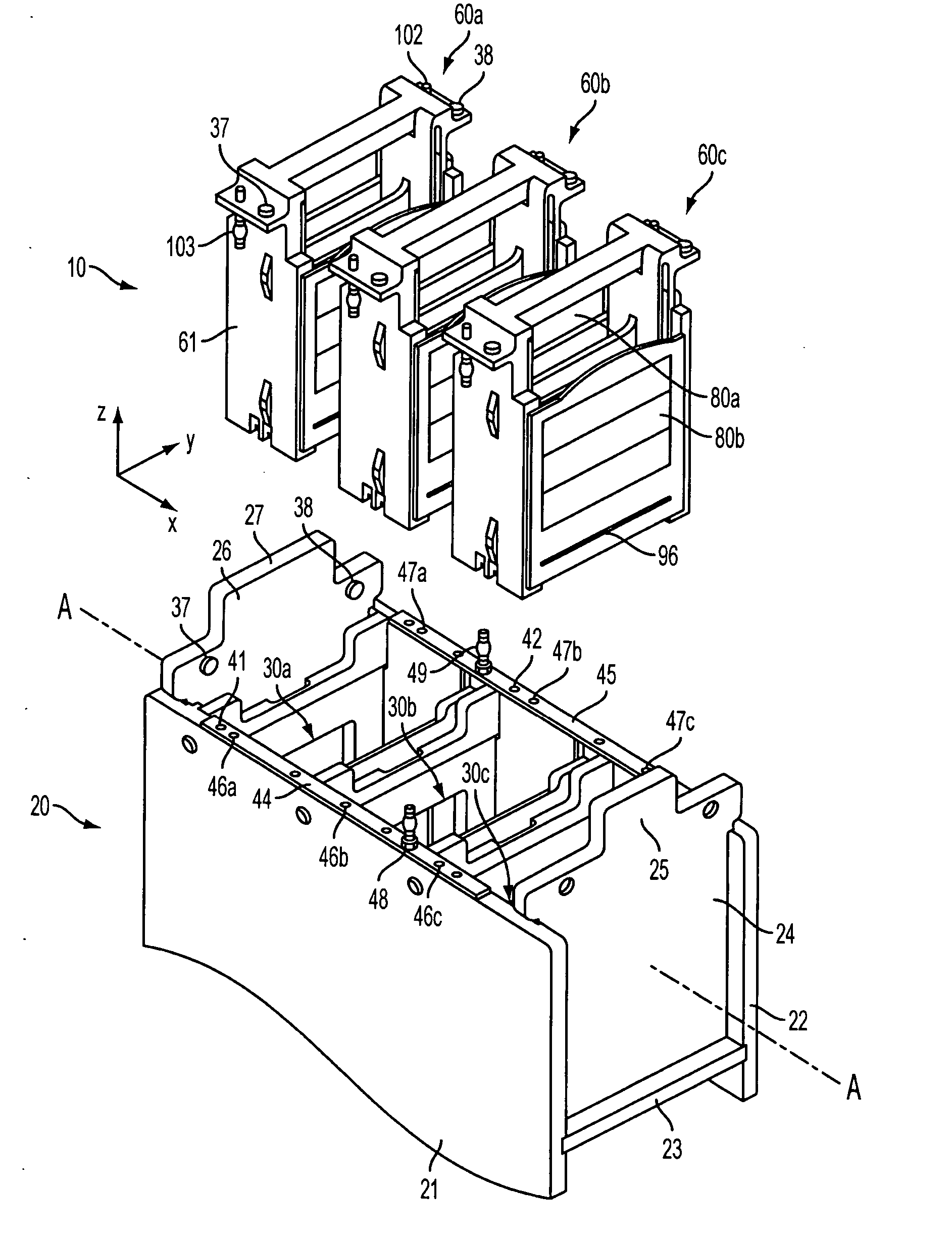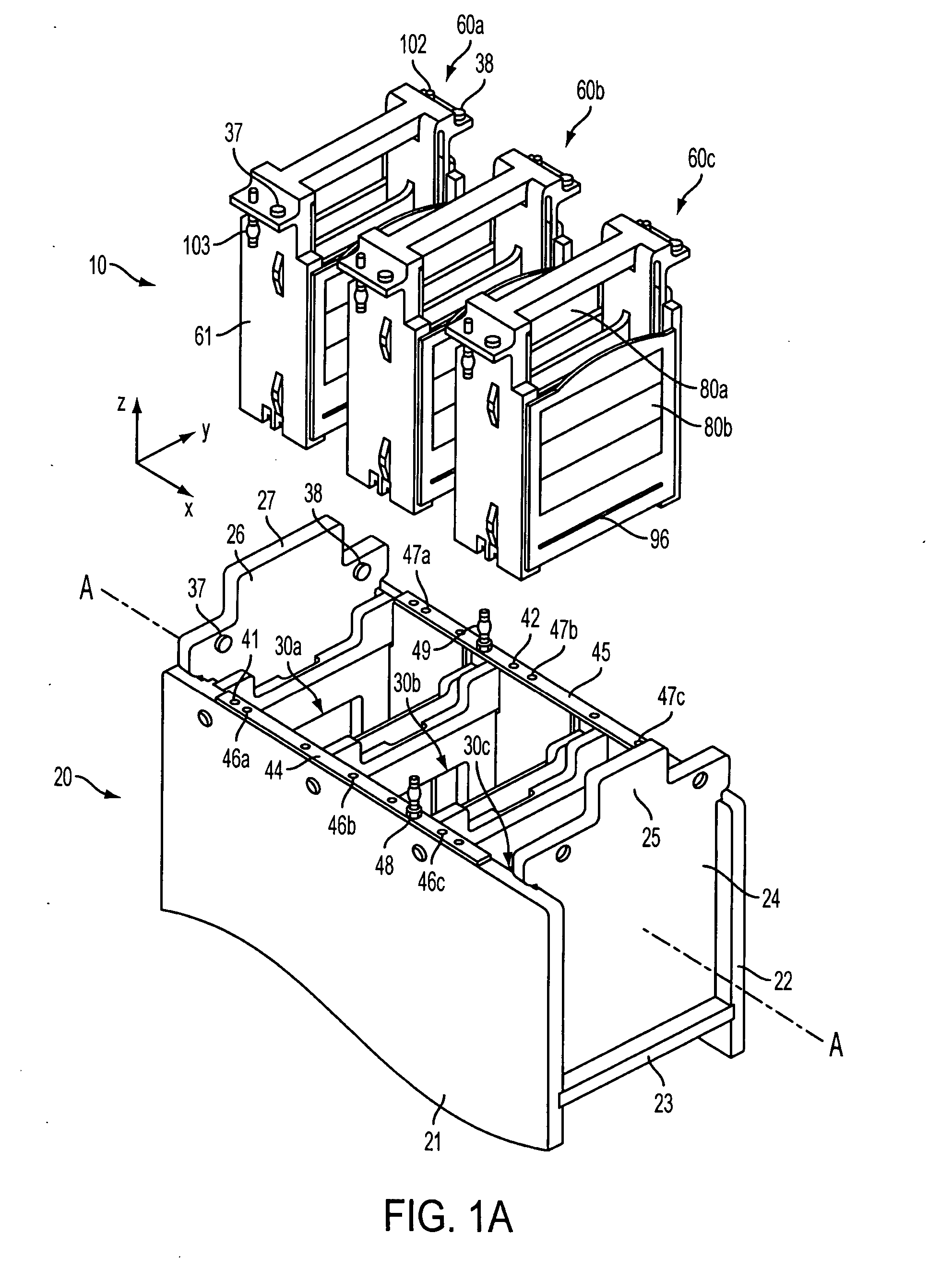Apparatus for concurrent electrophoresis in a plurality of gels
a technology of electrophoretic separation and apparatus, applied in the direction of fluid pressure measurement, liquid/fluent solid measurement, peptides, etc., can solve the problems of generating heat, “smile” or “frown” distortion, and particularly acute challeng
- Summary
- Abstract
- Description
- Claims
- Application Information
AI Technical Summary
Benefits of technology
Problems solved by technology
Method used
Image
Examples
Embodiment Construction
[0063] Referring now to FIGS. 1A-1B, apparatus and methods for performing multiple electrophoresis experiments in accordance with the present invention are described.
[0064] As shown in FIG. 1A, electrophoresis system 10 comprises container 20 having plurality of communicating chambers 30a-30c, and further comprises plurality of buffer core assemblies 60a-60c that correspond to respective chambers 30a-30c. Although three chambers and three buffer core assemblies are illustratively depicted herein, greater or fewer chambers and buffer core assemblies may be employed, as will be apparent to one skilled in the art from the following detailed description.
[0065] Container 20 preferably comprises first and second side walls 21 and 22, closed bottom 23, and first and second end walls 24 and 26, as shown in FIG. 1A. Container 20 is open at the top for receiving buffer core assemblies 60a-60c. Each buffer core assembly 60a-60c preferably comprises buffer core body 61 and a pair of gel casse...
PUM
| Property | Measurement | Unit |
|---|---|---|
| temperature | aaaaa | aaaaa |
| temperature | aaaaa | aaaaa |
| length | aaaaa | aaaaa |
Abstract
Description
Claims
Application Information
 Login to View More
Login to View More - R&D
- Intellectual Property
- Life Sciences
- Materials
- Tech Scout
- Unparalleled Data Quality
- Higher Quality Content
- 60% Fewer Hallucinations
Browse by: Latest US Patents, China's latest patents, Technical Efficacy Thesaurus, Application Domain, Technology Topic, Popular Technical Reports.
© 2025 PatSnap. All rights reserved.Legal|Privacy policy|Modern Slavery Act Transparency Statement|Sitemap|About US| Contact US: help@patsnap.com



